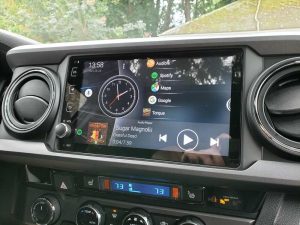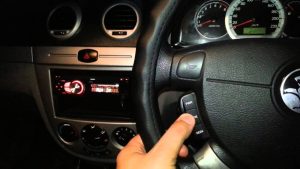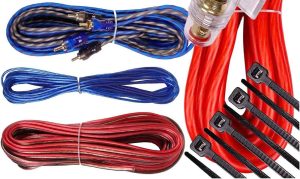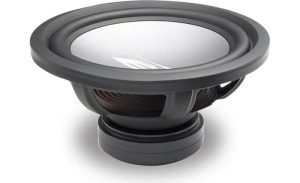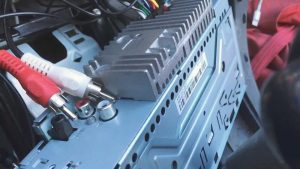A dead car battery is frustrating, especially when you discover your car stereo is the culprit—draining power even when turned off. This issue, known as parasitic battery drain, can leave you stranded and puzzled. Why does a stereo sap energy when it’s supposedly off? Let’s dive into the reasons behind this problem, explore practical solutions, and share tips to prevent it from happening again. By the end, you’ll know how to diagnose and fix a car stereo draining your battery, saving you time, money, and headaches.
Contents
Understanding Parasitic Battery Drain
Parasitic battery drain occurs when an electrical component, like a car stereo, draws power from the battery while the vehicle is off. A small amount of drain is normal—think of your car’s clock or security system. These systems use minimal power to stay active. However, a car stereo pulling excessive current can deplete the battery in days or even hours.
This problem often stems from faulty wiring, improper installation, or a malfunctioning stereo unit. The result? A battery that struggles to hold a charge, leaving your car unable to start. To tackle this, you need to identify the cause and take action. Let’s break down the common reasons your car stereo might be draining the battery.
Common Causes of Car Stereo Battery Drain
1. Poor Wiring or Incorrect Installation
Improperly installed car stereos are a leading cause of battery drain. If the stereo’s wiring isn’t connected correctly, it may remain powered even when switched off. For example, a constant power wire (often yellow) might be hooked up incorrectly, allowing the stereo to draw energy continuously. Loose connections or exposed wires can also create a short circuit, further draining the battery.
2. Faulty Stereo Unit
A defective car stereo can fail to enter “sleep mode” when turned off. Some units have internal issues, like malfunctioning circuits, that keep them active. Older stereos or low-quality models are especially prone to this. If the stereo’s memory or settings remain active, it pulls power unnecessarily.
3. Aftermarket Accessories
Aftermarket stereos often come with additional features like amplifiers, subwoofers, or Bluetooth modules. These components can draw power even when the stereo appears off. For instance, an amplifier might stay active if not wired to an ignition-switched power source, causing significant battery drain.
4. Stuck Relay or Switch
Some car stereos use a relay to control power. If the relay gets stuck in the “on” position, the stereo continues to draw power. Similarly, a faulty power switch might not fully disengage, keeping the system active.
5. Grounding Issues
A poor ground connection can cause erratic electrical behavior. If the stereo’s ground wire isn’t securely attached to the car’s chassis, it may create a partial circuit that drains the battery. Corrosion or loose bolts at the grounding point can worsen this issue.
6. Battery or Alternator Problems
While the stereo might seem like the problem, a weak battery or failing alternator could be contributing. A battery that can’t hold a charge will die quickly, even with minimal drain. An alternator that doesn’t properly charge the battery while driving can leave it vulnerable to parasitic drain.
How to Diagnose a Car Stereo Draining the Battery
Pinpointing the cause of battery drain requires a systematic approach. Here’s a step-by-step guide to diagnose the issue:
Step 1: Check the Battery
Start by testing the battery’s health. Use a multimeter to measure its voltage. A fully charged battery should read around 12.6 volts when the car is off. If it’s significantly lower, charge the battery or replace it if it’s old or damaged. A weak battery can make drain issues seem worse than they are.
Step 2: Inspect the Stereo’s Power Draw
To confirm the stereo is the culprit, perform a parasitic drain test. Here’s how:
- Disconnect the negative battery cable.
- Set your multimeter to measure current (amps) and connect it between the negative battery terminal and the cable.
- With the car off and all accessories turned off, the reading should be below 50 milliamps (0.05 amps). A higher reading indicates a parasitic drain.
- Remove the stereo’s fuse from the fuse box. If the current draw drops significantly, the stereo or its wiring is likely the issue.
Step 3: Examine Wiring and Connections
Inspect the stereo’s wiring harness for loose, frayed, or damaged wires. Check the constant power wire (usually yellow) and the switched power wire (often red). Ensure the constant wire connects to a battery-powered source and the switched wire ties to an ignition-controlled source. Look for signs of corrosion or poor grounding.
Step 4: Test the Stereo Unit
If wiring checks out, the stereo itself might be faulty. Disconnect the stereo from the wiring harness and recheck the parasitic drain. If the drain disappears, the stereo is defective and may need repair or replacement.
Step 5: Evaluate Accessories
If you have aftermarket components like amplifiers or subwoofers, test them individually. Disconnect each accessory and monitor the battery drain. A faulty or improperly wired accessory could be the source of the problem.
Solutions to Fix a Car Stereo Draining the Battery
Once you’ve identified the cause, take action to resolve the issue. Here are practical solutions tailored to each problem:
1. Rewire or Reinstall the Stereo
If improper wiring is the issue, rewire the stereo correctly. Use a wiring diagram specific to your car and stereo model. Ensure the constant power wire connects to the battery and the switched wire links to an ignition-controlled circuit. Secure all connections with electrical tape or heat-shrink tubing to prevent shorts. If you’re not confident in your skills, hire a professional car audio technician.
2. Replace a Faulty Stereo
A defective stereo unit needs replacement. Choose a high-quality model from a reputable brand to avoid future issues. Before installing the new unit, test it to ensure it enters sleep mode properly when powered off. Check user reviews for reports of battery drain issues with specific models.
3. Upgrade Aftermarket Accessories
For aftermarket components causing drain, consider upgrading to energy-efficient models. Install a remote turn-on wire for amplifiers to ensure they power off with the stereo. If the accessory is faulty, repair or replace it. Always follow the manufacturer’s wiring instructions.
4. Fix Grounding Issues
Locate the stereo’s ground wire and ensure it’s securely attached to a clean, unpainted metal surface on the car’s chassis. Remove any corrosion with a wire brush and tighten the connection. Test the ground with a multimeter to confirm continuity.
5. Replace a Stuck Relay
If a relay is stuck, replace it with a new one compatible with your stereo system. Test the new relay to ensure it toggles on and off correctly. If you’re unsure how to replace a relay, consult a professional.
6. Address Battery or Alternator Issues
Test the alternator’s output with a multimeter while the engine is running—it should read between 13.8 and 14.4 volts. If it’s lower, repair or replace the alternator. For a weak battery, replace it with a high-quality model suited to your car’s needs. Regularly clean battery terminals to prevent corrosion.
Preventing Future Battery Drain
Stopping battery drain before it starts saves you from future headaches. Here are proactive steps to keep your car stereo and battery in check:
1. Choose Quality Equipment
Invest in a reliable car stereo and accessories from trusted brands. Cheap, off-brand units are more likely to have defects that cause battery drain. Read reviews and check for energy efficiency ratings before buying.
2. Professional Installation
Unless you’re experienced with car audio systems, hire a professional for installation. A skilled technician ensures proper wiring, grounding, and configuration, reducing the risk of parasitic drain.
3. Regular Maintenance
Check your battery and stereo system periodically. Clean battery terminals, inspect wiring for wear, and test for parasitic drain every few months. Catching issues early prevents major problems.
4. Use a Battery Tender
If you don’t drive your car often, use a battery tender or trickle charger to keep the battery charged. This is especially helpful for vehicles with aftermarket stereos or extensive electronics.
5. Disconnect the Battery for Long-Term Storage
If you’re storing your car for weeks or months, disconnect the negative battery cable. This prevents any parasitic drain from the stereo or other components.
When to Seek Professional Help
Some battery drain issues are tricky to diagnose or fix on your own. If you’ve tried the steps above and the problem persists, consult a professional. A car audio specialist or auto electrician can use advanced tools to pinpoint the issue. They can also handle complex wiring repairs or stereo replacements. Look for certified technicians with good reviews to ensure quality work.
The Cost of Ignoring Battery Drain
Letting a car stereo drain your battery isn’t just inconvenient—it’s costly. A dead battery might need frequent recharging or replacement, costing $100-$200. Constant drain can also strain the alternator, leading to repairs of $300 or more. In extreme cases, electrical shorts from faulty wiring could damage other components, racking up even higher bills. Addressing the issue promptly saves you money and keeps your car reliable.
Key Takeaways
A car stereo draining the battery when off is a common but fixable problem. By understanding the causes—like faulty wiring, defective units, or aftermarket accessories—you can diagnose the issue with confidence. Use a multimeter to test for parasitic drain, inspect wiring, and evaluate components. Fix the problem by rewiring, replacing faulty parts, or upgrading accessories. Prevent future issues with quality equipment, professional installation, and regular maintenance.
Taking these steps ensures your car stereo enhances your driving experience without leaving you stranded. Don’t let a dead battery catch you off guard—act now to keep your vehicle’s electrical system in top shape.
FAQs
1. How do I know if my car stereo is draining the battery?
Test for parasitic drain using a multimeter. If the current draw exceeds 50 milliamps with the car off, and removing the stereo’s fuse reduces it, the stereo is likely the issue.
2. Can a car stereo drain the battery overnight?
Yes, especially if it’s improperly wired or faulty. A significant parasitic draw can deplete a battery in hours.
3. How much does it cost to fix a car stereo battery drain?
Costs vary. Rewiring might cost $50-$150, a new stereo $100-$500, and professional labor $100-$300, depending on the complexity.
4. Can a bad battery cause stereo drain issues?
A weak battery can’t hold a charge well, making drain seem worse. Test the battery first to rule it out.
5. Should I disconnect my car stereo when not in use?
It’s not necessary unless storing the car long-term. Fixing the drain issue is a better solution.
This guide equips you with everything you need to tackle a car stereo draining your battery. Follow the steps, stay proactive, and enjoy your music without the worry of a dead battery.

